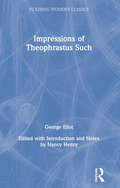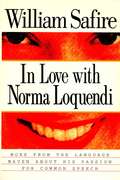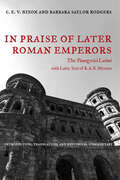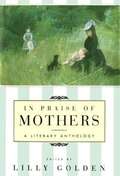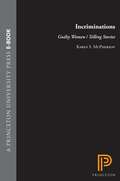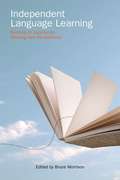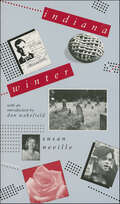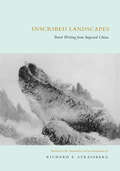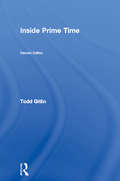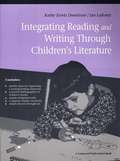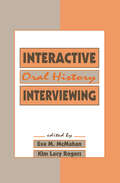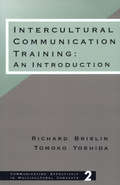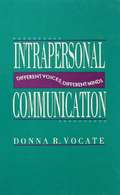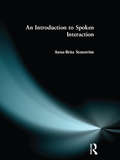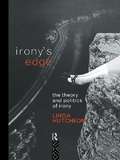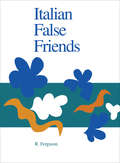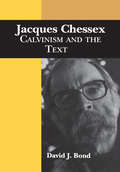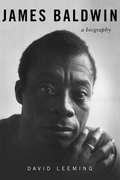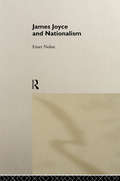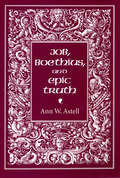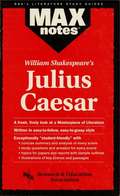- Table View
- List View
Impressions of Theophrastus Such: Essays And Leaves From A Note-book (classic Reprint) (Pickering Women's Classics)
by George EliotGeorge Eliot (1819-80) is one of the most widely-read of the 19th-century novelists and story-writers. "Impressions of Theophrastus Such" appeared in 1879, Eliot's last completed work. It consists of 18 short essays narrated by a middle-aged bachelor, Theophrastus.
In Love with Norma Loquendi
by William SafireThe Pulitzer Prize-winning columnist describes his lifelong fascination with Norma Loquendi--common speech--in a collection of columns that celebrates the mysteries and continual evolution of the English language.From the Hardcover edition.
In Praise of Later Roman Emperors: The Panegyrici Latini (Transformation of the Classical Heritage #21)
by C. E. Nixon Barbara Saylor RodgersHere, for the first time, is an annotated English translation of the eleven later panegyrics (291-389 C.E.) of the XII Panegyrici Latini, with the original Latin text prepared by R. A. B. Mynors. Each panegyric has a thorough introduction, and detailed commentary on historical events, style, figures of speech, and rhetorical strategies accompanies the translations. The very difficult Latin of these insightful speeches is rendered into graceful English, yet remains faithful to the original.
In Praise of Mothers: A Literary Anthology
by Lilly GoldenFourteen unforgettable short stories about mothers by some of the finest writers of our time, contains fiction about both young mothers and older mothers, from the perspective of sons, daughters, and mothers themselves. These stories about motherhood and childhood explore their subject from different and sometimes startling angles, but each touches on the complexity and poignancy-not the sentimentality-of being or having a mother. More than anything else, these stories explore the relationships within all kinds of families-most powerfully, the relationship between mother and child. Included here are Michael Dorris's "Groom Service," about an arranged marriage within a matriarchal society; Frank O'Connor's hilarious "My Oedipus Complex," which describes a small boy's reluctance to share his mother; Alice Walker's "Everyday Use," about a mother's staunch defense of herself and her heritage against her daughter; Charles Baxter's "Fenstad's Mother," in which an aged mother is still wiser than her middle-aged son; and stories by, among others, Hortense Calisher, Mary Lavin, and Pearl S. Buck. In Praise of Mothers will be enjoyed by anyone who is a mother or has a mother-and most of all, by anyone who loves the literary short story
Incriminations: Guilty Women/Telling Stories
by Karen S. McPhersonMaintaining that women's storytelling is a telling activity, Karen McPherson "reads for guilt" in novels by five twentieth-century writers--Simone de Beauvoir (L'Invitée), Marguerite Duras (Le ravissement de Lol V. Stein), Anne Hébert (Kamouraska), Virginia Woolf (Mrs. Dalloway), and Nicole Brossard (Le désert mauve). She finds in the vocabulary and atmosphere of these novels a linking of female protagonists to crime and culpability. The guilt, however, is not clearly imputed or assumed; it tends to trouble the conscience of the entire narrative. Through critical close readings and an inquiry into the interrelations among narration, transgression, and gender, McPherson explores how the women in the stories come under suspicion and how they attempt to reverse or rewrite the guilty sentence.The author examines the complex process and language of incrimination, reflecting on its literary, philosophical, social, and political manifestations in the texts and contexts of the five novels. She looks for signs of possible subversion of the incriminating process within the texts: Can female protagonists (and women writers) escape the vicious circling of the story that would incriminate them? In the course of this book, the stories are made to reveal their strikingly modern and postmodern preoccupations with survival.
Independent Language Learning
by Bruce MorrisonIndependent learning is not a new concept for language educators but while teachers, curriculum designers and policy makers have embraced it as underpinning modern notions of education, it remains a dynamic and vibrant field for researchers and academics who aim to broaden its scope and deepen our understanding of how it may be applied most effectively both inside and outside the classroom. The book's authors use their experience of applying the concepts related to independent learning in various geographical, cultural and pedagogical tertiary level learning contexts to present new perspectives on how independent learning can inform and support policy, teaching methodology, curriculum development and the nurturing of successful learners. While the first section of the book provides a view of the field from three broad curriculum development viewpoints, the remaining chapters primarily focus on the experience of learners, teachers and curriculum developers in applying principles of learner autonomy, self-regulation and self-direction with various types of learner - each with their own identities, motivations, expectations and goals. These learner and teacher stories provide insights that are important for an understanding of some of the impacts an independent learning approach to language learning have on learners in various educational contexts. This book will be of value to pre-service and in-service teachers, curriculum developers and teacher educators working in diverse educational contexts in more fully appreciating the contribution an independent learning focus can make to successful learning.
Indiana Winter
by Susan Neville"Neville's observations on inner and outer worlds deserve a large readership." —Studies in Short Fiction"Blending fictional and reportorial technique, Ms. Neville unwinds a tapestry of the Indiana seasons . . . in scene after remarkable scene she succeeds in disturbing and undermining one's calm. . . . moving . . . " —Christopher Lehmann-Haupt, The New York Times" . . . shrewedly perceptive studies of the poetics of place . . . Neville pierces the heart of this 'heart of the country,' unloosing disquieting images and poignant scenes that cling to your memory." —Belles Lettres"If there is darkness in this vision there is also compassion, a lucid and inclusive civility born of remembering how fragile are the houses of our lives." —Arts Indiana"A collection of essays, works of fiction and blends of those two genres, Indiana Winter is a poetic and disturbing interpretation of phenomena familiar to most of Neville's fellow Hoosiers—so familiar, in fact, that we may not really see them. . . . As a plunge into the blackness and glare of the examined life, Indiana Winter is a testament to courage." —Dan Carpenter, Indianapolis Star"These stories and essays are filled with great emotion and affection for the people and the land we've come to know as the Hoosier state." —Minneapolis Star Tribune" . . . a book that is firmly and honestly rooted in region, yet finds in its careful and lyrical examination of Indiana's people and places truths that move the prose pieces away from simple regionalism." —Sycamore ReviewA sensitive writer's imaginative essay-stories about spiritual boundaries and values in the state of Indiana and everywhere.
Inscribed Landscapes: Travel Writing from Imperial China
by Richard E. StrassbergAlongside the scores of travel books about China written by foreign visitors, Chinese travelers' impressions of their own country rarely appear in translation. This anthology is the only comprehensive collection in English of Chinese travel writing from the first century A.D. through the nineteenth. Early examples of the genre describe sites important for their geography, history, and role in cultural mythology, but by the T'ang dynasty in the mid-eighth century certain historiographical and poetic discourses converged to form the "travel account" (yu-chi) and later the "travel diary" (jih-chi) as vehicles of personal expression and autobiography. These first-person narratives provide rich material for understanding the attitudes of Chinese literati toward place, nature, politics, and the self.The anthology is abundantly illustrated with paintings, portraits, maps, and drawings. Each selection is meticulously translated, carefully annotated, and prefaced by a brief description of the writer's life and work. The entire collection is introduced by an in-depth survey of the rise of Chinese travel writing as a cultural phenomenon. Inscribed Landscapes provides a unique resource for travelers as well as for scholars of Chinese literature, art, and history.
Inside Prime Time (Communication and Society)
by Todd GitlinPrime time: those precious few hours every night when the three major television networks garner millions of dollars while tens of millions of Americans tune in. Inside Prime Time is a classic study of the workings of the Hollywood television industry, newly available with an updated introduction. Inside Prime Time takes us behind the scenes to reveal how prime-time shows get on the air, stay on the air, and are shaped by the political and cultural climate of their times. It provides an ethnography of the world of American commercial television, an analysis of that world's unwritten rules, and the most extensive study of the industry ever made.
Integrating Reading and Writing Through Children's Literature
by Kathy Everts Danielson Jan LabontyLanguage arts teachers (and future teachers) will find strategies for presenting student-centered and integrated literacy classes.
Interactive Oral History Interviewing: Interactive Oral History Interviewing (Routledge Communication Series)
by Kim Lacy Rogers Eva M. McMahanThe essays in this anthology represent, in the broadest sense, an interpretive perspective of inquiry that has flourished in oral history for the past 15 years. This perspective considers oral history interviews as subjective, socially constructed and emergent events; that is, understanding, interpretation, and meaning of lived experience are interactively constructed. The impetus for this volume was the editor's fascination with the multifaceted complexity of the oral history interview method coupled with the belief that, despite many books that address methodological issues, no single work takes as its focus those complex, interactive processes which constitute the oral history interview. The editors' purpose in developing this anthology, therefore, was to provide a variety of essays which taken together address the possibilities and constraints inherent in oral history interviewing.
Intercultural Communication Training: An Introduction
by Tomoko Yoshida Richard W. BrislinThis unique handbook provides an organizational framework for planning and establishing intercultural communication training programs. Drawing from intercultural communication and cross-cultural training, this guide emphasizes those aspects of training that explicitly involve face-to-face communication. The approaches covered apply to any situation where good personal relations and effective communication need to be established with people from different cultural backgrounds.
Intrapersonal Communication: Different Voices, Different Minds (Routledge Communication Series)
by Donna R. VocateIntrapersonal communication is a relatively new phenomenon for communication study and still lacks the grounding of a sound theoretical base. The first to present a developed theory of this discipline, this book's goal is to provide graduate students and professionals with an organized point of departure for their research. The theoretical section begins with an intrapersonal communication theory derived from the sociogenetic views of George Herbert Mead and L.S. Vygotsky. This theory emphasizes social interaction, the developmental nature of mind, and the crucial role of speech in creating a self, a culture, and a mind which then interact in human intrapersonal communication. This section also provides the reader with a coherent interdisciplinary knowledge base taken from speech communication, biology, neurology, cultural psychology, anthropology, sociology, speech pathology, and linguistics. The integrated theoretical perspective that results makes the study compatible with communication scholarship focusing on the social, cultural, cognitive, or performance aspects of communication phenomena. The applications section examines neurophysiological/intrapersonal communication research methods and studies to date, together with specific applications of intrapersonal communication theory to childhood language acquisition, to the establishment of gender identities, and to intrapersonal competence. The final chapter presents pedagogical guidance on how we can influence intrapersonal competence and performance as well as commenting on the current state of this study and its future prospects. The editor's interstitial commentary facilitates access by readers wishing to constuct their own theory.
Introduction to Spoken Interaction, An
by Anna-Brita StenstromDescribes how conversation works, providing a systematic and exhaustive account of the structure of spoken discourse and the diverse strategies speakers use to have a conversation. It is illustrated throughout with excerpts from genuine conversation and contains numerous exercises with suggested answers based on conversations in the London-Lund Corpus of English Conversation.
Inventing High and Low: Literature, Mass Culture, and Uneven Modernity in Spain
by Stephanie SieburthDire word of the cultural threat of the lowbrow goes back at least to the ancient Greeks, and yet, Stephanie Sieburth suggests, no division between "high" and "low" culture will stand up to logical scrutiny. Why, then, does the opposition persist? In this book Sieburth questions the terms of this perennial debate and uncovers the deep cultural, economic, and psychological tensions that lead each generation to reinvent the distinction between high and low. She focuses on Spain, where this opposition plays a special role in notions of cultural development and where leading writers have often made the relation of literature to mass culture the theme of their novels. Choosing two historical moments of sweeping material and cultural change in Spanish history, Sieburth reads two novels from the 1880s (by Benito Pérez Galdós) and two from the 1970s (by Juan Goytisolo and Carmen Martín Gaite) as fictional theories about the impact of modernity on culture and politics. Her analysis reveals that the high/low division in the cultural sphere reinforces other kinds of separations--between social classes or between men and women--dear to the elite but endangered by progress. This tension, she shows, is particularly evident in Spain, where modernization has been a contradictory and uneven process, rarely accompanied by political freedom, and where consumerism and mass culture coexist uneasily with older ways of life. Weaving together a wide spectrum of diverse material, her work will be of interest to readers concerned with Spanish history and literature, literary theory, popular culture, and the relations between politics, economics, gender, and the novel.
Irony's Edge: The Theory and Politics of Irony
by Linda HutcheonThe edge of irony, says Linda Hutcheon, is always a social and political edge. Irony depends upon interpretation; it happens in the tricky, unpredictable space between expression and understanding. Irony's Edge is a fascinating, compulsively readable study of the myriad forms and the effects of irony. It sets out, for the first time, a sustained, clear analysis of the theory and the political contexts of irony, using a wide range of references from contemporary culture. Examples extend from Madonna to Wagner, from a clever quip in conversation to a contentious exhibition in a museum. Irony's Edge outlines and then challenges all the major existing theories of irony, providing the most comprehensive and critically challengin theory of irony to date.
Italian False Friends
by Ronnie FergusonItalian words that resemble words in English but have different meanings are the cause of student bafflement and some hilariously mistaken usage. Examples of falsi amici that continue to amuse teachers of Italian include casino, which is a brothel or mess, not a gambling place, and intossicazione, which is food poisoning, not intoxication. Ronnie Ferguson has confronted the much-neglected problem of `false friends,' or deceptive cognates, with a dictionary which makes it possible for the student of Italian to alert her- or himself to the pitfalls. Accurate translation, essay work, and comprehension hinge on the confident handling of key words prone to incorrect interpretation, and Italian False Friends will be a useful tool to assist students to improve their proficiency in these areas.This book is an excellent companion volume to Interferenze Lessicali:Italiano-inglese, the practical teaching workbook with drills and exercises by Marina Sasu Frescura published earlier in the series. Italian False Friends is effectively illustrated with samples from newspapers, magazines, street signs, and books.
Jacques Chessex: Calvinism and the Text
by David J. BondDespite an impressive body of poems, novels, short stories, and literary criticism; high praise for his writing by French and Swiss critics; and a collection of honours that includes the prestigious Prix Goncourt, awarded for his novel L'Ogre in 1973, Jacques Chessex is relatively unknown outside France and Switzerland. With this book, David J. Bond provides the first comprehensive study of his work in any language--a study that reveals Chessex's deep ambivalence towards his Calvinist heritage and his efforts to resolve this dilemma through his texts.Born in 1934 in Payerne, in the region of French-speaking Switzerland known as the Vaud, Chessex grew up amid the pervasive influence of the Calvinist church. His writing, which tells of Vaud society and the hypocrisy of many of its leading members, reveals his preoccupation with a rigid morality, sin, remorse, and death. Bond shows that while Chessex uses his texts to escape this heritage and affirm alternative values, particularly sexual pleasure and enjoyment of life, his writing reveals a deep nostalgia for the stability and security of a strict religious system in a world that he finds unstable and even absurd without it. Chessex looks to the text as a univocal organizing principle that might impose order and sense. Bond sees in Chessex's writing an attempt to find unity in opposing values, to establish contact with others, and to overcome an obsession with death and the passing of time.
James Baldwin: A Biography
by David LeemingJames Baldwin was one of the great writers of the last century. In works that have become part of the American canon-Go Tell It on a Mountain, Giovanni’s Room, Another Country, The Fire Next Time, and The Evidence of Things Not Seen-he explored issues of race and racism in America, class distinction, and sexual difference. A gay, African American writer who was born in Harlem, he found the freedom to express himself living in exile in Paris. When he returned to America to cover the Civil Rights movement, he became an activist and controversial spokesman for the movement, writing books that became bestsellers and made him a celebrity, landing him on the cover of Time.In this biography, which Library Journal called "indispensable,” David Leeming creates an intimate portrait of a complex, troubled, driven, and brilliant man. He plumbs every aspect of Baldwin’s life: his relationships with the unknown and the famous, including painter Beauford Delaney, Richard Wright, Lorraine Hansberry, Marlon Brando, Harry Belafonte, Lena Horne, and childhood friend Richard Avedon; his expatriate years in France and Turkey; his gift for compassion and love; the public pressures that overwhelmed his quest for happiness, and his passionate battle for black identity, racial justice, and to "end the racial nightmare and achieve our country.”Skyhorse Publishing, along with our Arcade, Good Books, Sports Publishing, and Yucca imprints, is proud to publish a broad range of biographies, autobiographies, and memoirs. Our list includes biographies on well-known historical figures like Benjamin Franklin, Nelson Mandela, and Alexander Graham Bell, as well as villains from history, such as Heinrich Himmler, John Wayne Gacy, and O. J. Simpson. We have also published survivor stories of World War II, memoirs about overcoming adversity, first-hand tales of adventure, and much more. While not every title we publish becomes a New York Times bestseller or a national bestseller, we are committed to books on subjects that are sometimes overlooked and to authors whose work might not otherwise find a home.
James Joyce and Nationalism
by Emer NolanJames Joyce and Nationalism comprehensively revises our understanding of Joyce by re-examining his writing against Irish Nationalism. In this exciting and provocative book, Emer Nolan looks at the relationship between modernism and nationalism, tracing the applicability of alternative notions of nationalism to the various phases of Joyce's work. Nolan also brings post-colonial and feminist theories to a close re-reading of Joyce's works. This insightful and challenging work provides a polemical introduction to Joyce and is a much needed contribution to the vast field of Joyce studies. James Joyce and Nationalism is a ground-breaking and theoretically engaged intervention into debates about Joyce's politics and the politics of modernism.
Job, Boethius, and Epic Truth
by Ann W. AstellCalling into question the common assumption that the Middle Ages produced no secondary epics, Ann W. Astell here revises a key chapter in literary history. She examines the connections between the Book of Job and Boethius' s Consolation of Philosophy—texts closely associated with each other in the minds of medieval readers and writers—and demonstrates that these two works served as a conduit for the tradition of heroic poetry from antiquity through the Middle Ages and into the Renaissance. As she traces the complex influences of classical and biblical texts on vernacular literature, Astell offers provocative readings of works by Dante, Chaucer, Spenser, Malory, Milton, and many others.Astell looks at the relationship between the historical reception of the epic and successive imitative forms, showing how Boethius's Consolation and Johan biblical commentaries echo the allegorical treatment of" epic truth" in the poems of Homer and Virgil, and how in turn many works classified as "romance" take Job and Boethius as their models. She considers the influences of Job and Boethius on hagiographic romance, as exemplified by the stories of Eustace, Custance, and Griselda; on the amatory romances of Abelard and Heloise, Dante and Beatrice, and Troilus and Criseyde; and on the chivalric romances of Martin of Tours, Galahad, Lancelot, and Redcrosse. Finally, she explores an encyclopedic array of interpretations of Job and Boethius in Milton's Paradise Lost, Paradise Regained, and Samson Agonistes.
Julius Caesar (MAXNotes Literature Guides)
by Joseph ScaliaREA's MAXnotes for William Shakespeare's Julius Caesar The MAXnotes offers a comprehensive summary and analysis of Julius Caesar and a biography of William Shakespeare. Places the events of the play in historical context and discusses each act in detail. Includes study questions and answers along with topics for papers and sample outlines.
Khe I Kakarampundu! (drama): UBC contracted
by N. J. MunyembaneHeyi bugu I sumbedza khudano vhukati ha matshilel a tshikale na a musalauno. Khosi Vho-Maanda a vha tevheli ndila dza tshikale, vha hana u diisa ngoma dza vhatannga na vhasidzana, vha dovha vha hana u mala vhafumakazi vhanzhi. Vha tevhedza matshilele maswa ngauri vha dzia matshilele a tshikale sa a si na mushumo, naho hu na vhathu vhane vha kometshedza u tshila tshikale.
Khe I Kakarampundu! (drama): UBC uncontracted
by N. J. MunyembaneHeyi bugu I sumbedza khudano vhukati ha matshilel a tshikale na a musalauno. Khosi Vho-Maanda a vha tevheli ndila dza tshikale, vha hana u diisa ngoma dza vhatannga na vhasidzana, vha dovha vha hana u mala vhafumakazi vhanzhi. Vha tevhedza matshilele maswa ngauri vha dzia matshilele a tshikale sa a si na mushumo, naho hu na vhathu vhane vha kometshedza u tshila tshikale.
La estructura ausente: Introducción A La Semiótica (Ensayo Ser. #Vol. 76)
by Umberto EcoUna introducción a la semiótica de la mano de su mayor experto: Umberto Eco Después de Obra abierta, en la que estudiaba los lenguajes experimentales del arte contemporáneo, y de Apocalípticos e integrados, donde abordaba las técnicas y los temas de la comunicación de masas, Umberto Eco analiza aquí las fronteras de la semiótica. Comprender los sistemas de signos obliga a ver los códigos como estructuras y explicarlas a través de otras estructuras más vastas, en un movimiento regresivo hacia la matriz originaria de toda comunicación, hasta llegar a una estructura no estructurada. La conclusión metafísica de esta búsqueda no puede ser más que el rechazo del código de códigos: la negación de la estructura ausente. Coordinando todas sus investigaciones precedentes, Umberto Eco vuelve a asentar las bases de la semiótica y propone un verdadero sistema de la cultura como comunicación. La crítica ha dicho...«La figura de Umberto Eco es tanto mayor cuanto más tiempo pasa.»Vicente Verdú, El País
